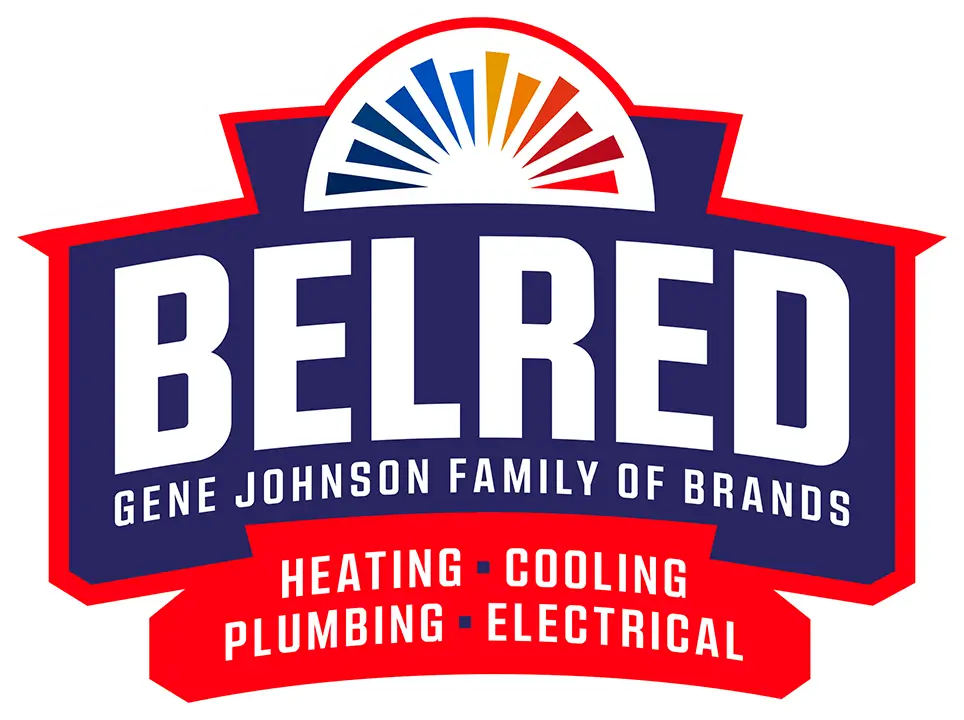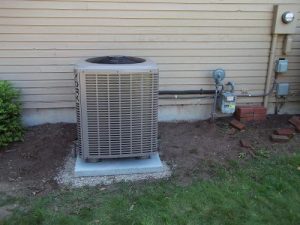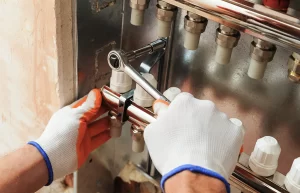There’s nothing quite like the sinking feeling of waking up to a chilly house when your furnace seems to be running just fine. You can hear it firing up and the blowers cranking away, but not a puff of warm air is hitting the vents. Talk about a confusing headache!
While a total furnace shutdown makes the problem pretty obvious, tackling a “no heat” situation with your system operating is a bigger head-scratcher. From thermostat issues and blown fuses to problems with the pilot light or condensate lines, there are actually several potential culprits to investigate.
In this guide, we’ll walk through the most common reasons why your furnace may run but not produce heat, along with troubleshooting steps you can take before calling in the professionals. Don’t stay in the cold – get to the bottom of this HVAC mystery!
Understanding Your Furnace System
Before we dive into the potential reasons why your furnace may be running without producing heat, it’s important to first understand the key components that make up a typical forced-air heating system and how they all work together.
Your furnace is essentially a self-contained appliance that burns fuel (gas, oil, or electric) to generate heat. This heat is then distributed throughout your home via a network of air ducts and vents. Let’s break down the main parts:
The Thermostat
This is the brain that monitors and regulates your home’s temperature. When the thermostat detects indoor temps have dropped below your set heating level, it sends a signal to fire up the furnace.
The Burners/Heat Exchanger
Upon receiving that signal, the burners ignite to generate heat. This heat travels into the adjoining heat exchanger – a series of metal chambers and coils that allow the heat to transfer into the circulating air without mixing with combustion gases.
The Blower
A large fan motor spins the blower, which forces cold air through the heat exchanger to be warmed. This heated air then circulates out through the ductwork.
The Venting
As the heat exchanger warms the air, it also needs to safely expel any gaseous combustion byproducts created by the burners. This exhaust exits through a designated exhaust flue/vent.
The Electronic Control Board
Think of this as your furnace’s computer brain. It coordinates all components—thermostat, gas valve, igniter, blower, exhaust—and cycles through each operational sequence for safe, efficient heating cycles.
While fairly simple in theory, there are a surprising number of parts and processes all needing to work in perfect sync for your furnace to properly generate and distribute heat. Any one component failure can seriously throw a wrench into the whole system.
Now that you understand what makes your furnace system tick, we can explore the variety of issues that may cause everything to run but no comforting warmth to actually reach your home’s living spaces.
Common Reasons Why There Is No Heat
Even with all the parts and processes involved, that annoying “no heat” situation usually boils down to just a handful of likely culprits. Some are basic enough you can troubleshoot yourself, while others take a trained professional eye to diagnose properly.
Thermostat Issues
It all starts with the thermostat calling the shots. If your home’s temperature control center has gone haywire, it might very well be why your furnace is running but not pumping out any actual warmth.
Dead batteries, loose wires, bad settings, or poor thermostat locations can throw off the temperature readings and lead to all kinds of heating chaos. No amount of fiddling with it may get your system back on track.
Dirty or Clogged Filters
One of the most frequent heating snafus is something as simple as ignoring your air filters for too long. Once those dust-catchers get clogged up, that blockage prevents air from circulating through your furnace and into your ductwork.
You’ll hear your blower working overtime to force air through, but zero heat will make it into your vents. A filter swap will likely clear things right up – just don’t forget to also check for any debris buildup around the blower itself while you’re at it.
Pilot Light or Ignition Failure
This terrible trio – the pilot light, igniter, and ignition control module – is what provides the critical spark to get your furnace’s heat-generating burners lit and going. Any failure in this ignition sequence means your system can hum along but with no actual combustion heat source.
A constantly re-lighting or extinguishing pilot is an obvious red flag. But snags with the electronic igniter or control module are tougher to pinpoint sometimes. Diagnosing ignition glitches may require professional instruments.
Faulty Blower Motor
Once your furnace successfully fires up and generates heat, it relies on the blower motor to circulate and distribute that nice warm air throughout your ductwork and vents. If the blower motor itself starts failing, you’ll likely hear it struggling – grinding, squeaking, or constant humming – but it won’t have enough oomph to push heated air outwards.
Blower motors can burn out over time from overuse, lack of lubrication, or if the blower wheel gets jammed up with debris. While not the most complicated fix, swapping out a blower motor is usually best left to skilled HVAC techs who can properly test, diagnose, and replace the full assembly.
Flame Sensor Issues
This important safety component exists to continuously monitor the burner flames during furnace operation cycles. If the flame sensor detects an issue – like damaged burners, excess soot buildup, or irregular combustion patterns – it will automatically shut down heat production to prevent safety hazards.
Unfortunately, flame sensors themselves are also prone to occasionally malfunctioning by getting too dirty, going bad, or being improperly positioned. When this happens, your furnace may still attempt normal operation but consistently get tripped up by the finicky sensor before heat can flow.
Ductwork Issues
In some cases, your furnace could be running perfectly fine and generating plenty of heated airflow – but you’re just not feeling those heating effects due to problems with your ductwork.
Leaky air ducts, disconnections, blockages, or even poor ductwork design can all prevent that hot air from properly circulating through your home’s living spaces.
While less common, ductwork issues can masquerade as a “no heat” situation if warm air is essentially going nowhere or leaking out before reaching vents and registers. Checking ductwork integrity is one of the more involved tasks better left to professional assessment.
Faulty Thermostat Wiring
We already covered how thermostat glitches can prevent your furnace from properly receiving heat commands. But even with the thermostat itself functioning fine, issues with the wiring that connects it to your furnace system can create the same lack of heat scenarios.
If thermostat wiring becomes damaged, frayed, corroded, or has loose connections anywhere along its run, it can disrupt the communication signals needed to initiate and maintain furnace operation cycles. Your system may run briefly before hitting roadblocks in the wiring that cause it to abort and shut down prematurely before heat distribution.
Fuel Supply Problems
For furnaces that rely on fuels like natural gas or oil instead of electricity, a compromised fuel supply can make it impossible to establish those crucial combustion burner flames that generate heat in the first place. Without a steady fuel feed, your furnace might try valiantly to run but just can’t get cooking.
Potential supply issues to check include gas line leaks, switched-off valves, depleted oil tank levels, or obstructed fuel lines and connections. Any interruptions in consistent fuel delivery will sabotage heat production pretty quickly.
Exhaust Flue Blockages
As your furnace burns fuel and creates heat, it also produces exhaust gases that need proper ventilation to the outdoors. This expelling happens through an exhaust flue pipe that exits your home. If this flue becomes blocked, clogged or is too damaged to allow sufficient exhaust flow, it can automatically trigger safety switches that shut down burner operation.
While your furnace may try running normally during this event, exhaust backups force it to immediately cut off to prevent hazardous gases from entering your living spaces. Checking for flue obstructions like bird nests, debris, or excessive soot buildup is important for ensuring proper furnace exhaust venting.
High Limit Switch Activation
Your furnace contains several safety switches designed to automatically shut down operations if potential hazards are detected. One of the most important is the high limit switch, which monitors heat exchanger temperatures.
If the heat exchanger starts to dramatically overheat beyond safe levels, this switch will trigger and kill the furnace’s burners to prevent fires, cracks, or carbon monoxide hazards from developing. When this high limit kicks in, your system may still appear to be running but with no actual heat production.
Overheating Furnace
Along those same lines, excessive overheating throughout your entire furnace system could also force it to cease heat output for safety purposes. Overheating can stem from blower failures, lack of airflow, or even electrical system faults causing temperature spikes.
If internal components get too hot, either the high limit switch will throw the kill switch, or the furnace’s own thermal protections will initiate an automatic hard shutdown. You’ll likely get error codes or warning lights, but no actual heating until the overheating issue is resolved.
While an extensive list, the majority of “no heat” furnace issues unfortunately require the trained eye of an experienced HVAC professional for accurate diagnosis and repair.
Troubleshooting Steps
If your furnace is running but not producing any heat, there are a few basic troubleshooting steps you can take before calling in the professionals. These allow you to identify and potentially resolve some of the more straightforward issues covered earlier.
Start With the Obvious
While it may seem silly, it’s always wise to begin by confirming your thermostat is set properly and giving your system the right heating commands. Ensure it’s:
- Set to “Heat” mode rather than “Cool” or “Off”
- Temperature setting is higher than current room temp
- Fan is set to “Auto” rather than “On” continuously
- Batteries are fresh and installed correctly
You’d be surprised how often simple thermostat setting errors are the root cause! If adjustments don’t spark your system into action, move on to inspecting other components.
Check Air Filters
Next up, check your furnace’s air filters – both return air and those installed at the unit itself. Extremely dirty, clogged filters are a frequent culprit behind airflow issues that can mimic “no heat” situations.
If filters appear heavily soiled, replace them with fresh ones and check if airflow improves. Don’t forget to also investigate the areas around the blower fan and motor for potential blockages that need clearing.
Inspect Pilot/Ignition System
For furnaces with standing pilot lights, check if the flame is lit. If not, you may be able to relight the pilot following the manufacturer’s instructions. Be very careful, as exposed gas lines are involved.
For electronic ignition furnaces, take a look through the observation window to ensure the igniter is glowing and successfully firing the burners during operation. You may get confirmation from indicator lights as well.
If the ignition sequence doesn’t seem to be completing, it’s best to discontinue any troubleshooting and call a professional for assistance with this part of the system.
Look, Listen, Smell for Issues
As your furnace runs, be attentive to any unusual sights, sounds, or odors that could indicate other problems like:
- Rattling, squeaking or grinding blower noises
- Booming, rumbling combustion sounds
- Acrid, burning smells that could indicate overheating
These are all potential signs of larger component failures requiring skilled HVAC assessment. Don’t try disassembling or repairing furnace parts yourself.
Double-Check Power & Fuel
Confirm your furnace has consistent power from the electrical panel – no tripped circuit breakers or blown fuses. For gas furnaces, verify fuel supply lines are open and tank/meters show available fuel.
If these basic troubleshooting steps don’t reveal and resolve the core “no heat” issue, it’s time to swallow your pride and call in a certified HVAC technician for professional diagnosis and repair. Attempting further DIY work risks causing costlier system damage.
When to Call a Professional
You’ve worked through the basic DIY troubleshooting checklist for your furnace’s no-heat situation – thermostat settings, air filters, fuel/power supply, visual inspections. But if your system still refuses to produce any warmth after these straightforward measures, it’s likely time to wave the white flag and call in professional HVAC technicians.
While trying to identify and remedy furnace issues yourself is an admirable cost-saving effort, there’s also a limit to what’s feasible for the average homeowner to tackle safely and effectively. Certain components and system areas are best left to experienced pros with the proper training, tools and understanding of HVAC operation principles.
Here are some wise times to quit the DIY route and schedule a furnace repair service call (833) 252-2270 today
You’ve Identified a Complex Issue
If your visual inspections and troubleshooting uncovered signs of problems like a faulty blower motor, cracked heat exchanger, ignition control faults or blocked exhaust flues, these are all cases where professional diagnostic tools and skill sets are really required.
You Can’t Pinpoint the Problem
Sometimes, the root cause behind no-heat situations can be maddeningly difficult to accurately diagnose, even after checking all the easy potential culprits like filters and thermostats. Rather than hazing in the dark, it’s smarter to have trained eyes evaluate.
You Smell Gas or Combustion Byproducts
Any type of gas odor or uncombusted exhaust smell is an immediate warning sign of a potentially hazardous furnace condition that warrants an urgent professional response. Don’t try operating the system any further.
Your Furnace Has Error Codes or Warning Lights
Those blinking LED lights and coded signals on your furnace’s control panel are its way of calling for professional help. HVAC techs can decipher these fault codes and target the related systems needing repair.
You Have Safety Concerns
At the end of the day, if you ever feel unsure about safely operating, inspecting, or repairing your furnace, it’s always best to defer to professionals rather than risk injury or system damage. Heating systems handle combustible fuels, hazardous voltages, and complex controls – all areas to tread carefully in.
While the service call costs can sometimes sting, attempting “out of your league” repairs without the proper HVAC knowledge, tools, and experience often proves far costlier in the long run through preventable system damage or personal harm. When in doubt, call it out to certified heating experts!
Preventive Maintenance Tips
When your furnace starts blowing cold this winter, it’s tempting to just let sleeping dogs lie and hope the issue resolves itself. But an ounce of prevention is worth a pound of cure when it comes to avoiding full-blown heating breakdowns. With a little routine care, you can help keep your furnace running like a well-oiled machine for years to come.
Stock Up on Filter Supplies
We can’t stress enough the importance of keeping your furnace’s air filters fresh and changed regularly. Built-up dust and debris are public enemy #1 when it comes to airflow restrictions that mimic “no heat” symptoms. Set a recurring reminder to inspect filters monthly.
Get on the Annual Service Schedule
Having a professional furnace tune-up performed annually allows HVAC techs to thoroughly inspect, clean and tighten up the entire system before small issues can snowball into bigger problems. It’s like an oil change for your car – some preventative maintenance goes a long way!
Keep it Combustible-Free
Whether you have a gas or oil furnace, be diligent about removing any potential combustible items, materials or vapors from the area around your furnace’s air intakes and venting equipment. Allowing clutter to accumulate inside your furnace room is just asking for trouble.
Give it Some Breathing Room
While furnaces are generally out-of-sight, out-of-mind appliances, don’t treat yours like a total basement/utility room castaway. Ensure there’s sufficient clearance space around your furnace on all sides to facilitate proper clean air intake and exhaust venting.
Stay Persistent with Maintenance
At the first signs of hiccups like odd noises, odors or erratic cycling behavior, don’t ignore them and hope they’ll self-resolve. Vigilant monitoring and addressing of brewing issues through professional servicing can prevent surprise breakdowns.
Your furnace is a complex heating system, not an old beater car you can just beat on through neglect. Treating it to routine care and listening to its cries for help are the keys to weathering each winter in cozy warmth. When the heating gremlins inevitably arise, you’ll know it’s time to call in the trusty pros!
When Your Furnace Goes Cold, Don’t Go It Alone – Call BelRed!
There’s nothing quite like waking up to an icebox instead of a warm, cozy home when your trusty furnace decides to take a season off. While DIY diagnosis and repairs may seem tempting, a heating system contains complex components that demand experienced, trained hands. Why risk personal safety or costly system damage when the local pros at BelRed Energy Solutions are just a call away?
For decades, BelRed has been Washington’s trusted source for top-notch heating, cooling, and indoor air quality services done right the first time, every time. Our certified HVAC techs know furnaces inside and out, utilizing the latest tools and techniques to accurately pinpoint performance issues and restore reliable operation on the spot. From simpler tune-ups to full system overhauls, you can count on our honest advice and skilled workmanship.
Don’t resign yourself to a frosty winter of discontent. Give BelRed Heating, Cooling, Plumbing & Electrical a ring at (855) 345-6161 at the first signs of heating trouble. Our comfort advisors will promptly schedule a technician to get your stubborn furnace performing like a champ again in no time. With BelRed on the job, you can leave the HVAC headaches to the experts and simply enjoy powerful warmth all season long!







